Restaurants
The color of your interiors is more important than you’d think
Sustainability
The data afforded by serialization could be the missing link


Waste
The decontamination of food decreases waste and improves safety
Issue 191 - 2022
Marc Carena explains why the recipe for success at Mars Wrigley includes sustainability as a main ingredient
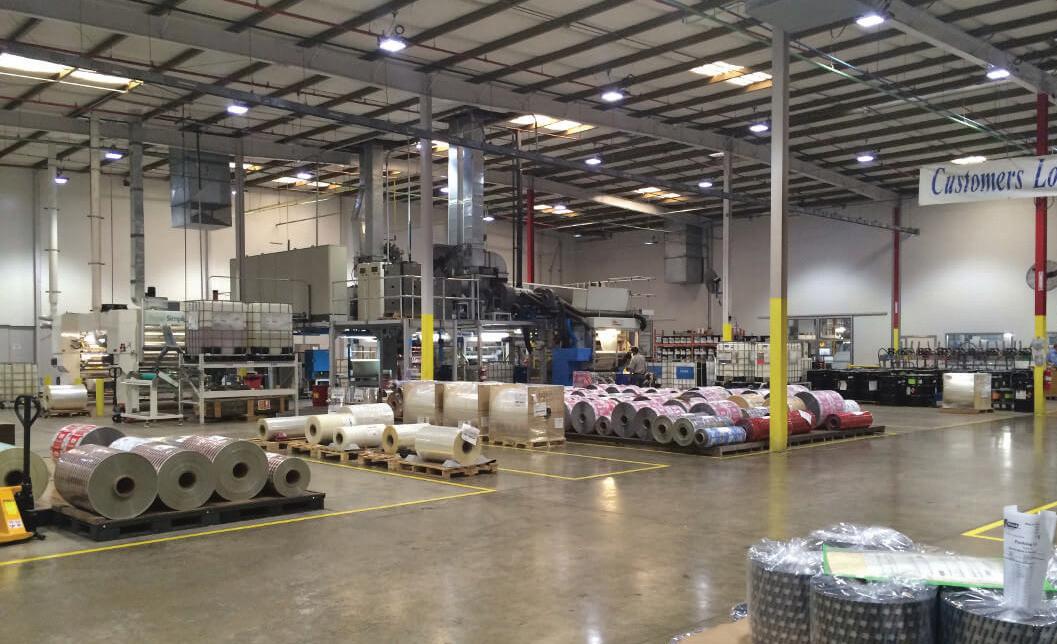













CEO Andrew Schofield


Group COO Joe Woolsgrove
Creative Consultant Tom Vince
Data & Insights Director Jaione Soga
Editor Libbie Hammond

Assistant Editor Mary Floate
Content Editors Alex Caesari, Danielle Champ, Steven Dobinson
Editorial Administrator Amy Gilks
Creative Lead Lee Protheroe
Managing Art Editor Fleur Daniels
Art Editors Paul Gillings, David Howard, Charlie Protheroe
Artwork Administrator
Rochelle Broderick-White Sales Director Alasdair Gamble
Project Directors Philip Monument, Joy Francesconi
Head of Content Management
Adam Blanch
Client Sales Executives
Chloe Allman, Mark Cawston
Project Managers Lewis Bush, Michelle Fontaine, Natalie Griffiths, Jo-Ann Jeffery, Ben Richell, Basil Sharpe, Laura Thompson
Content Managers Johanna Bailey, Victoria Burke, Mark Cowles, Valentina Forero, James Fuller, Jeff Goldenberg, Melanie Joyce, James Page, Wendy Russell, Richard Saunders, Kieran Shukri
Media Sales Executives Mike Berger, Jessica Eglington, Will Gwyther, Reid Lingle, Sam Surrell
General Manager Florida Division Ryan Finn
Social Media Co-ordinator Rosie Clegg
IT Support Iain Kidd
Administration Natalie Fletcher, Rory Gallacher, Ibby Mundhir
© 2022 Finelight Media Group
Corporate Head Office
Cringleford Business Centre, 10 Intwood Road. Cringleford, Norwich NR4 6AU U.K.
T: (312) 854-0123 T: +44 (0) 1603 274130
US Office 2240 West Woolbright Road, Suite 402 Boynton Beach. FI 33426 T: (561) 778-2396
Hello and welcome to the December issue of Food Chain. This month’s features include a discussion around food waste, which is always topical but even more so around Christmas. Author Larry Clarke takes a look at how decontamination early in the food life cycle can have an impact on limiting food waste. He makes some interesting points – the article starts on page 20 - see if you agree with the premise!
If you find yourself in a restaurant over the festive period, take a moment to look more closely than you might normally at the interior décor. Did you know the colors chosen for walls and accessories could be having an effect on your mood and dining choices? Our article from Alliance Online will give you some hints on how it works.
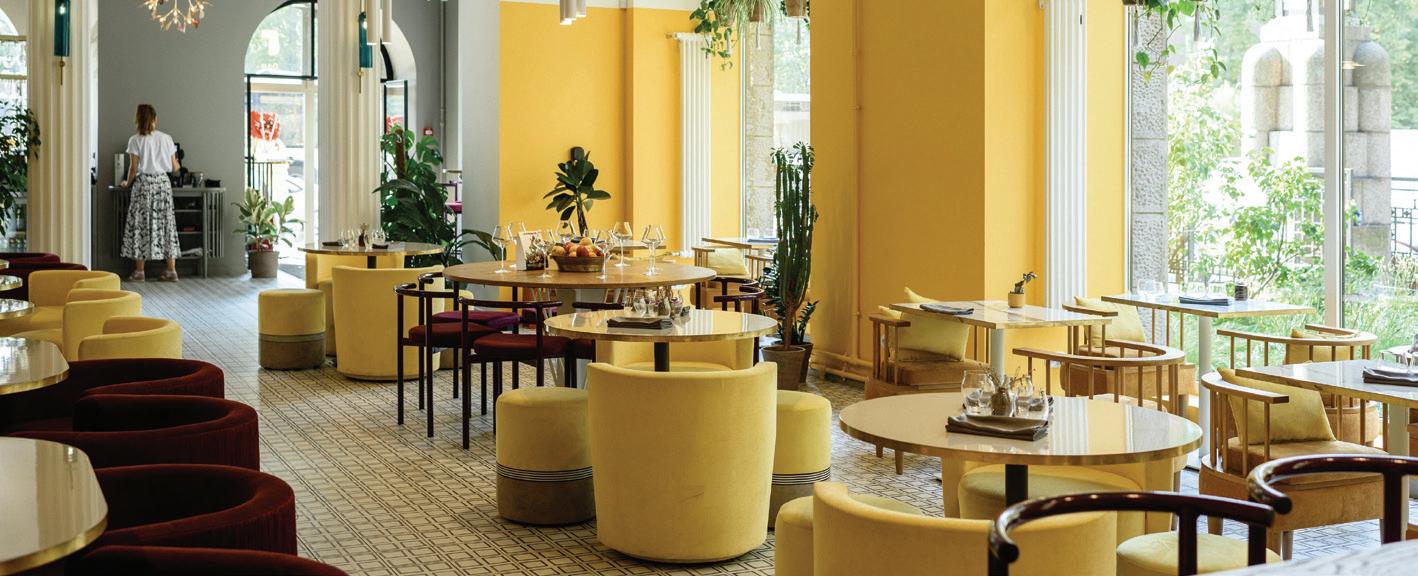
Editor
LH@finelightmediagroup.com
In our cover story, Marc Carena, Regional President for Europe, Central Eurasia, Belarus and Turkey, reports on Mars Wrigley’s commitment to people, product and planet. Turn to page 6 to learn more.
you can measure Sustainability The data afforded by serialization could be the missing link The color of your interiors is more important than you’d think food decreases waste and improves safety Marc Carena explains why the recipe for success at Mars Wrigley includes sustainability as a main ingredient Please note: The opinions expressed by contributors and advertisers within this publication do not necessarily coincide with those of the editor and publisher. Every reasonable effort is made to ensure that the information published is accurate, and correct at time of writing, but no legal responsibility for loss occasioned by the use of such information can be accepted by the publisher. All rights reserved. The contents of the magazine are strictly copyright, the property of Finelight Media Group, and may not be copied, stored in a retrieval system, or reproduced without the prior written permission of the publisher.
Food Chain magazine today at @foodchain_mag food-chain-magazine
Libbie Hammond,
Follow
Welcome foodchainmagazine.com 1



Restaurants Sustainability
Inside this issue
12 16 6 Contents 2
Cover Story Mars Wrigley



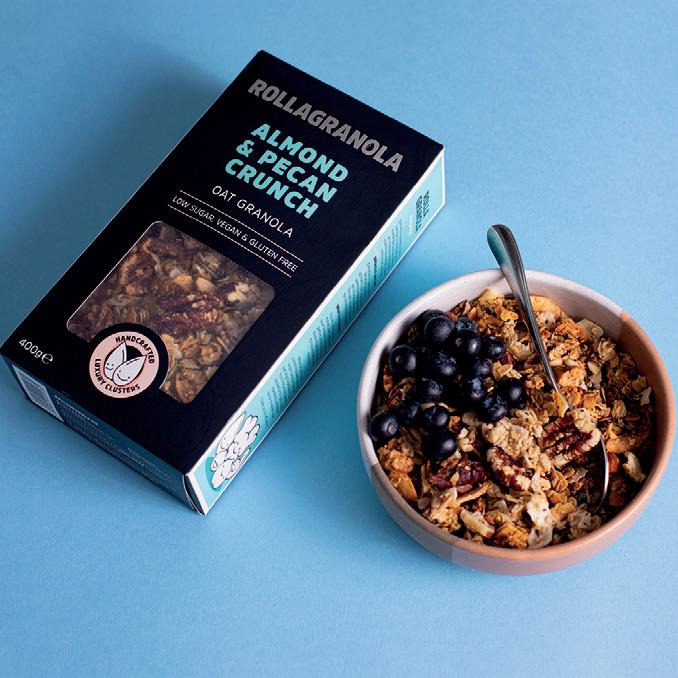

Waste Functional ingredients Soreen Taste Test News 20 24 32 28 29 food chain magazine foodchainmagazine.com 3
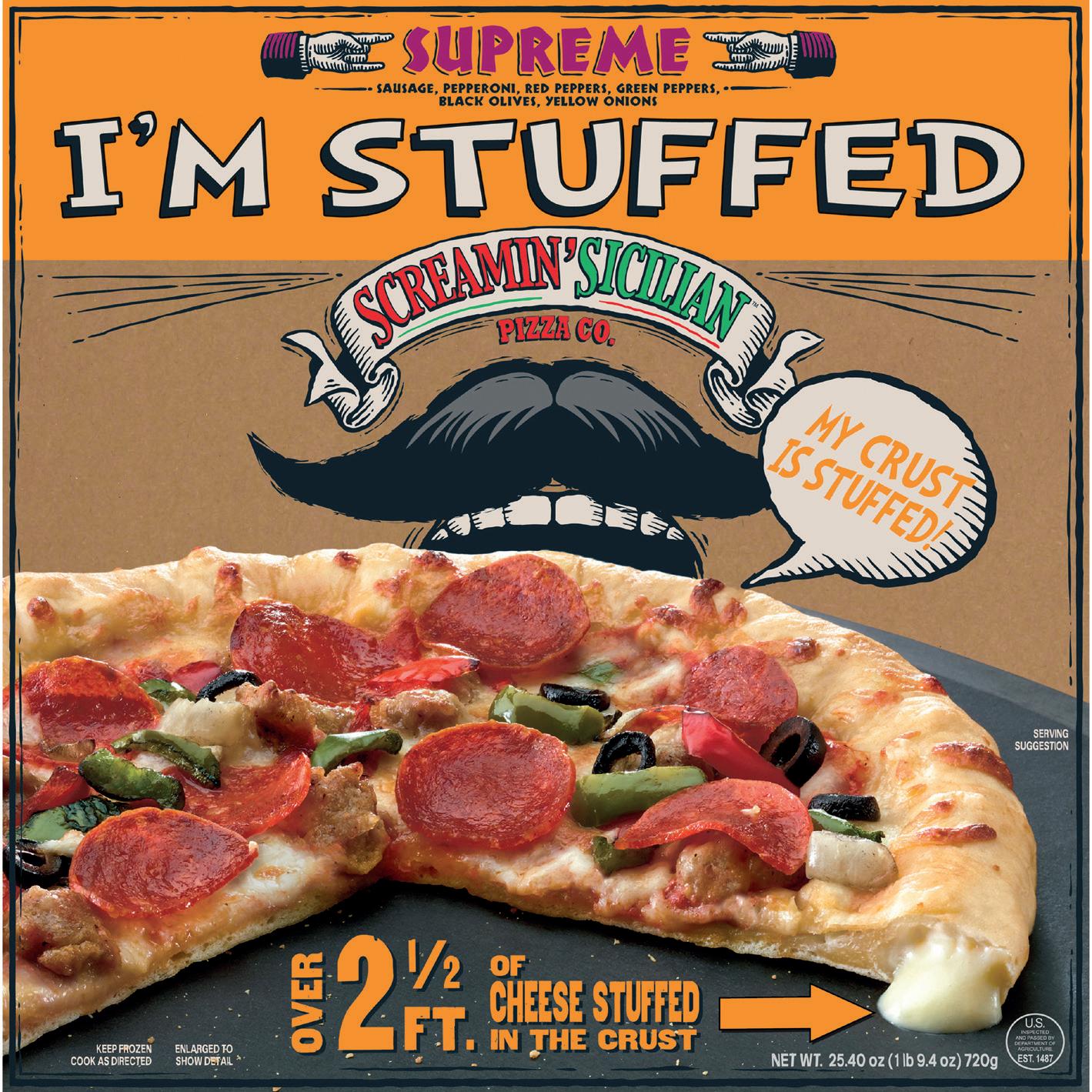




JAI
38 44 54 50 Contents 4
Palermo’s Pizza Brothers Drinks
Wen
Nardelli’s
Generation 7000
With More Innovation Than Ever Before
Miele’s new Generation 7000 appliances feature refined design and pioneering technology. These intuitive appliances integrate purposeful innovation for a completely new kitchen experience.
Miele. Immer Besser. | Discover more at mieleusa.com

Pleasure you can measure Pleasure you can measure
Marc Carena of Mars Wrigley discusses the organization’s impressive commitment to people, product and planet
From Skittles and Snickers to M&M’s, and Marc Carena’s personal favorite, Maltesers, Mars Wrigley (Mars) boasts a wealth of wellloved brands. For generations, people, and their pets, have enjoyed Mars’ products and services, and the organization’s ‘Associates’ (how Mars refers to its employees) work hard to consistently evolve and deliver on customer expectations.
Earlier in 2022, Mars announced the appointment of Marc Carena as Regional President for Europe, Central Eurasia, Belarus and Turkey, which accounts for around one third of the business’ entire activity. Marc is excited to be part of an organization that has a positive impact on people’s lives across the world. “At Mars Wrigley, we inspire moments of everyday

Cover story 6
 Marc Carena, Regional President for Europe, Central Eurasia, Belarus and Turkey
Marc Carena, Regional President for Europe, Central Eurasia, Belarus and Turkey
7
.com
Mars Wrigley
foodchainmagazine
happiness for our consumers. This is a wonderful reason to go to work. I’m lucky enough to work with some of the biggest and best-loved brands in the world, and having the opportunity to grow them further is a challenge I’m excited to be tackling.”
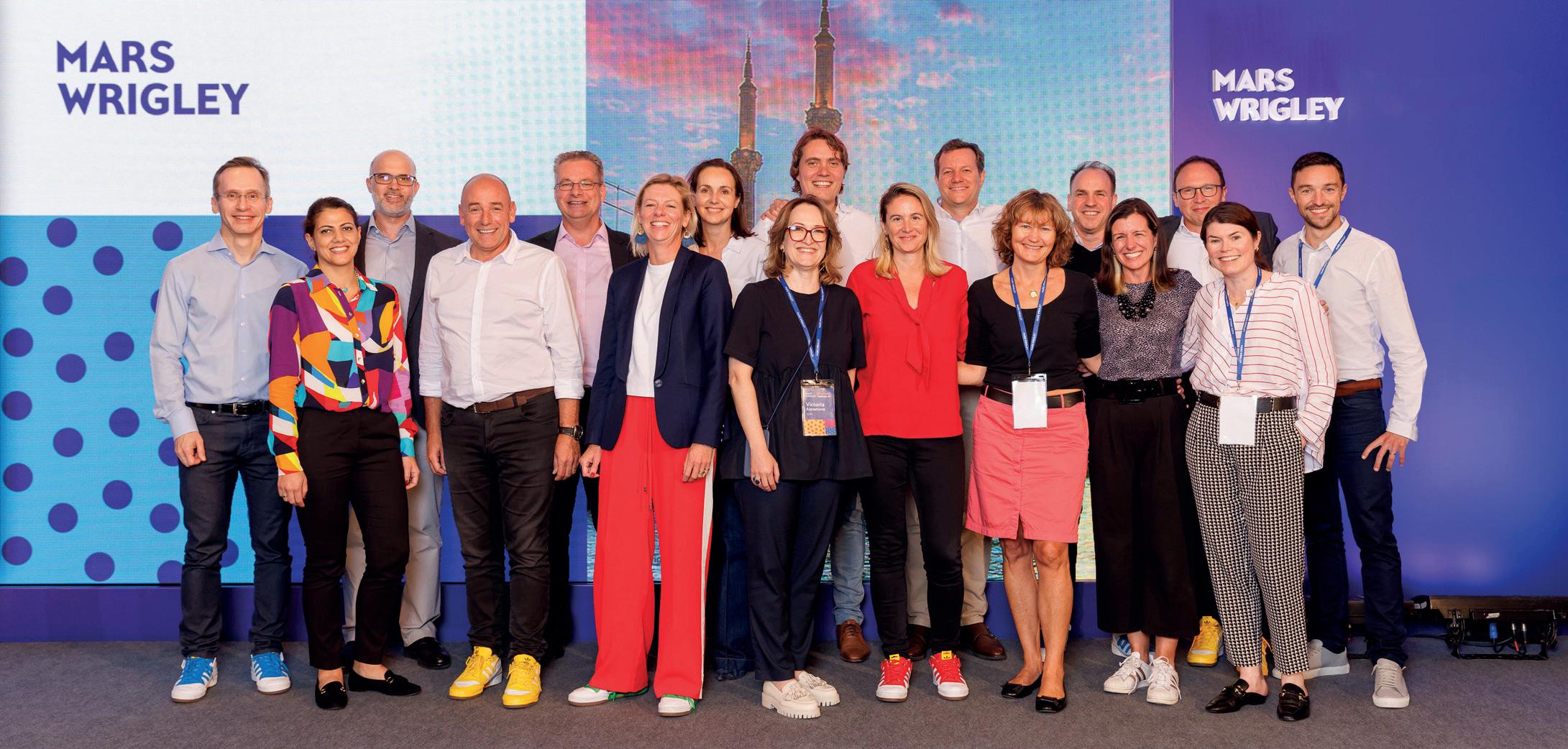

Marc joined the organization from McDonald’s Russia, where he spent almost four years as Managing Director. In this role, he maintained full responsibility for the
“ “
Russian market, including over 850 restaurants and 65,000 employees. Before joining McDonald’s, he spent six and a half years in senior general management and marketing positions with the German retailer, Metro Group. He has also held several senior general manager, marketing and sales positions at Nestlé, across Europe, Asia and Africa.
Marc brings his extensive experience in retail, foodservice and Fast-Moving Consumer Goods (FMCG) to help enhance and drive Mars’ strategy for purpose-led growth across Europe, Central Eurasia, Belarus and Turkey. He provides a unique understanding of the industry, its value chain, and consumer and customer needs. His experience of managing in over 30 countries, from developed to developing markets, across three
There is a real emphasis on talent, continuous development, and collaboration Cover story 8
“
“
continents, will help him to successfully lead his current portfolio of countries. Passionate about championing employees and their development, he is keen to engage with the Mars ‘Associate’ concept.
Lasting impact
“There is a real emphasis on talent, continuous development, and collaboration. Everyone has a voice, and a progression plan. I really don’t think this is true of many companies. Mars nurtures an equalitarian culture; it is informal and far from hierarchical. Even the CEO doesn’t have a separate office,” explains Marc.
Associates at Mars are ‘everyday heroes,’ united by an inspiring purpose. They take pride in Mars’ unique way of doing business, and everyone is empowered to learn, expand, dream and develop. Mars is proud to be ‘family-owned, futurefacing, and purpose-driven.’ Embedded within its culture is the mantra: ‘the world we want tomorrow, starts with how we do business today.’ As a global company, with the footprint of a small country, the organization has the responsibility, and the opportunity, to leave a lasting impact on the world. Indeed, Mars challenges its people, partners and suppliers to transform the way it does business, every day.
“As a private company, we have the luxury of thinking in generations rather than quarters,” continues Marc. “So, we have a chance to make a real impact. Mars is strongly led by its purpose, and tries to achieve holistic value creation, incorporating positive societal impact. It is a trusted partner to stakeholders as well as a strong performer, financially. Our
remuneration structure helps us achieve near-term results without compromising on the world we want tomorrow.
“Mars is led by a set of strong core principles, one of which is mutuality, which means working together with customers and suppliers to find the win-win outcome in every situation. From people and R&D to sustainability and packaging, our approach is underpinned by our global purpose, thereby ensuring that we take a principled, purposeled approach to all decision making.”

Indeed, this principled approach is threaded throughout the organization’s operations, and particularly so, in terms of attitude and approach to sustainability. Mars’ ‘Sustainable in a Generation’ plan includes working to create a healthy planet and thriving communities. One such commitment in action is accelerating its progress to achieving net zero Greenhouse Gas (GHG) emissions by 2050.
“I am excited about our sustainability agenda. We are mobilizing our suppliers on climate action. Since joining the Supplier Leadership on Climate Transition (LoCT) program last year, Mars has engaged over 85 suppliers to enrol, representing roughly 25 percent of our total carbon footprint. We are focused on engaging and mobilizing our largest 200 suppliers to maximize impact, and catalyze change through our broader supply chain,” enthuses Marc.
An additional commitment is evidenced by Mars’ dynamic relationship with CARE, an organization that saves lives, defeats poverty, achieves social justice, and fights for women and girls. “Via our Women for Change Program,” Marc explains, “we have been investing in community-
Mars Wrigley 9 foodchainmagazine.com
based initiatives to empower women through finance, skills and networks. In September 2022, we exceeded our target by reaching more than 77,000 Village Savings and Loans Association members in Ghana and Cote d’Ivoire, more than 75 percent of which are women.”
Partnership approach
The target to be net-zero, not only as a business but also with a scope-3 supply chain, by 2050, is an incredibly exciting ambition, one that will be driven, in part, by Mars’ desire to contribute to a circular economy. This model of production and consumption involves sharing, reusing, refurbishing and recycling existing materials and products for as long as possible.
issue, we are investing hundreds of millions of dollars in the reimagining and redesigning of our packaging. This includes redesigning more than 12,000 packaging types across our diverse portfolio to fit with the recycling infrastructure that either exists today, or is likely to exist in the near future. Today, almost half of our packaging portfolio is undergoing redesign or elimination.
“In 2020, we introduced our new gum bottle, changing the material from High Density Polyethylene (HDPE) to Polyethylene Terephthalate (PET), a more popular recyclable plastic material. Then in 2021, in the German market, we launched a further improved gum bottle featuring 30 percent recycled PET. Furthermore, our new M&M’s pouch is designed to be recyclable, according to the existing local packaging waste collection and sorting system. By simplifying the design and structure of our flexible packaging formats, we are significantly improving their chances of being recycled. To reinforce these measures and organizational accountability, Mars’ top 300 executives now have remuneration linked to delivering against these packaging targets.
Indeed, Mars’ ice-cream factory in Steinbourg, France, was the first in its global network to run entirely from renewable energy. It no longer uses energy from fossil fuels, but rather from renewable wind, hydro and solar sources. “We now hope to roll this measure out across additional sites, as it is a crucial step in our global commitment to achieve carbon neutrality throughout the supply chain by 2050,” elaborates Marc.
“We are also striving to ensure our packaging material, for example, never becomes waste, but rather, is recycled, reused or composted. To address the
“Our business can only be successful if our partners, including the communities, suppliers, customers and planet we depend on, are also thriving. This isn’t altruism, it is sound, mutual business,” reinforces Marc. “Over recent years, we’ve seen how important our partners are to our operations, which is why we will continue to prioritize our partner and supplier relationships.”
One crucial component of the Mars supply chain is cocoa. Marc explains: “We have committed $1 billion over ten years as part of our ‘Cocoa for Generations’ strategy. Launched in 2018, it aims to
Cover story 10
2050
deliver real, lasting positive change across the supply chain for future generations. The strategy focuses on the critical issues that need to be addressed for cocoa farming families to thrive, taking action to help protect children, preserve forests, and improve farmer income. In October, we announced that from 2023, 100 percent of the cocoa purchased for Mars’ direct factory operations across Europe will be responsibly sourced. This is a huge milestone for the business, and one of which I’m immensely proud.”
Sustainability focus
In Marc’s relatively short tenure to date, he has relished getting under the skin of the business. From market visits and factory tours to meeting colleagues and exploring the full product portfolio, he has had the opportunity to learn about the strong foundations of the business, potential areas for development, and reflect on plans for the future.
“We’ve made huge leaps forward in recovering ground lost during the pandemic due to reduced footfall in retail stores. We’ve worked closely with our retail customers to ensure that the right products from www.mars.com
the right brands are in the right locations in store, to make sure they are available and noticeable for consumers. In fact, our gum brands are leading the charge in this respect. With exciting new formats and flavors, we are working hard to maximize distribution and display across the region. Consumers love our gum and we want to make sure they can find it wherever they go. “Without a doubt, post-induction, I’m aware that the biggest challenge we face, not just as a business but as a global community, is sustainability. However, we do already have a great foundation for this with our ‘Sustainable in a Generation’ program, and our ambitious targets. We know that we must act now; deadlines in the future cannot be an excuse for inaction and delay. We have already cut our full value chain GHG emissions by 7.3 percent since 2015 despite business growth. We’re committed to delivering this by having robust internal governance to ensure we hold ourselves accountable to our ambitions,” he concludes. ■

Mars Wrigley 11 foodchainmagazine.com
the color of your restaurant means Set

What
As a restaurant owner you’ll no doubt have put a serious amount of time, energy, and money into the interior design of your establishment. But what does the color of your restaurant mean? And, more importantly, how does it make your customers feel?

Color psychology is the study of how colors can affect people, and the different subconscious associations we have with each shade and tone. So, hospitality and catering suppliers Alliance Online have looked into color psychology to determine what the color of your restaurant may be telling your patrons about your business. 12
the mood
Red
Red is perhaps the most stimulating color you could choose to decorate your restaurant with. It is very eye-catching, and it is often associated with physical energy and alertness — which is probably why it is so often used in fast food and takeaway branding. However, there are romantic connotations to the color red, too, which make it the ideal option for cozy dining rooms, and it is also the color most associated with stimulating appetite. So, in many ways, it is the perfect choice for restaurants!

The downside to using red in your interior design is that too much of it can sometimes lead to subconscious feelings of aggression, so it’s best used as an accent color rather than your primary shade.
Orange
Orange is a color that is said to encourage teamwork and openness, so if you’re looking to create an atmosphere of friendliness among your staff and customers, this is the right color for you. It’s best used in tapas or small plates restaurants, or simply those with a more laid-back feel. Warm and joyful, it can invoke feelings of sociability and encourage
conversations in your restaurant, so it’s more suited to a room with dining tables than fast-food counters.

However, as orange contains the color red, it could similarly be perceived as overwhelming to some people if overused.
Yellow
Yellow is said to stimulate serotonin (the ‘happy’ hormone) in our brains, so it’s a great color for fun restaurants such as burger bars or family-style eateries. Use yellow wherever you want to promote cheeriness and laughter — if you specialize in fine dining, you can opt for a pale yellow to provide an upbeat atmosphere while keeping your design sophisticated.
As with red, there is a downside to doubling down on yellow décor. Studies have shown that too much yellow could have almost the opposite of the desired effect, including hyperactivity and becoming overly emotional. So, you might want to consider a yellow feature wall rather than painting all the walls of your restaurant, or to try decorating with yellow accents.

Restaurants 13 foodchainmagazine.com
Green
Green is a color of harmony, neutrality, and balance, so it’s always been considered a safe option to decorate a restaurant with. However, more recently, it has even more potential to be beneficial for your business. Healthy eating, veganism, and sustainability are more on trend now than they have ever been, so if your restaurant ticks any of those boxes, it makes sense to advertise that to potential customers with a green color scheme.
Another great thing about green is that there are so many shades to choose from, from bold
emerald to pale mint, olive, and seafoam — though it’s best to stay away from ‘sickly’ yellow greens that might remind people of illness. Plants, living walls, and herb gardens are a particularly safe way to bring green into your establishment, especially for vegan or eco-friendly restaurants.

Blue
Blue is an extremely popular color in interior design as it promotes rest and calm, making you feel safe and even sleepy in the right circumstances. As a result, restaurants tend to shy away from it and choose more upbeat, stimulating
14
“ “
color schemes
“
colors instead. This is probably for the best, as it has also shown potential to be an appetite suppressant.
That’s not to say that blue should never find its way into restaurant décor, however. If you want to create the kind of establishment where people go to unwind and relax, it can help relieve their stress and evoke feelings of trust — perfect for encouraging repeat custom.

A bright, fresh blue can also remind people of being on holiday as it is reminiscent of the sea and clear, sunny skies, so if you’ve chosen blue for your restaurant, you shouldn’t necessarily reconsider you decision.
Consistent branding
“It’s interesting to know that you can use color schemes to influence the way people perceive and respond
to your hospitality business. When decorating, think about the USP of your restaurant and the mood you want to create, then choose colors that reflect those,” said Rachael Kiss, Marketing & Online Manager at Alliance Online.
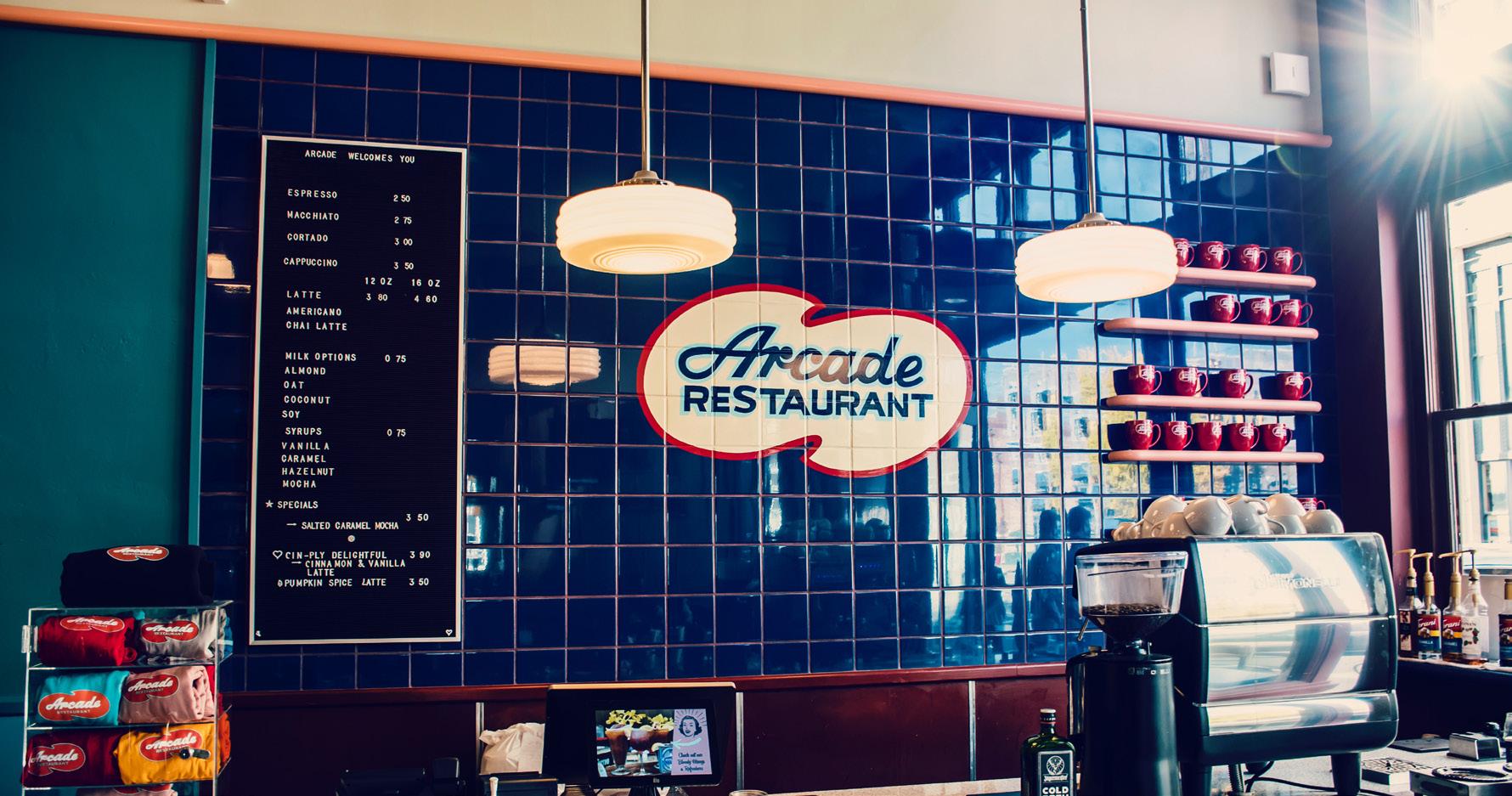
“Your brand colors should be a jumping off point to ensure consistent branding — but remember that each color can also have a negative association when overused. Bold colors, such as red, may be better off incorporated as accent colors.
“Opportunities to include accent colors include feature walls, artwork, and furniture, but also your crockery, cutlery, and napkins can be used to provoke the mood you want to.” ■
www.allianceonline.co.uk
Alliance Online specialises in catering and kitchen equipment selling both to trade professionals and the public. Founded in 1999, Alliance Online works with a vast range of suppliers to deliver high quality equipment to professionals in the hospitality industry and to those at home. Alliance Online has a dedicated fleet working across the country to ensure quick and efficient delivery options.
“
Restaurants 15 foodchainmagazine.com
...you can use
to influence the way people perceive and respond to your hospitality business

16
Vital links
The variable data behind sustainable food supply chains
Organizations worldwide are facing increasing regulatory pressure to provide greater traceability of their products. This pressure is two-fold, stemming from the need to protect consumer health and safety, and develop more transparent, future-proof supply chains. These drivers for change could be viewed as a necessary evil – a stick enforcing the adoption of new solutions and processes to provide additional data – however, this is not necessarily the case.
As Lee Metters, Group Business Development Director, Domino Printing Sciences, explains, traceability and transparency require little more than a humble, serialized code – the vital link that joins a product to its online data, provenance, and history. Moreover, organizations can use the data afforded by serialization to achieve much more than compliance.
Spotlight on security
The last decade has seen a marked increase in the number of governments and regulators requiring a greater and more stringent exchange of data to protect patient and consumer safety. Often this is achieved via 2D codes and serialization – assigning an individualized or variable code to items so that they can be uniquely identified, tracked, and traced throughout their lifetime.
Regulatory serialization requirements* have been restricted to pharmaceuticals, medical devices, and tobacco until recently. However, as global demand for more transparency within supply chains increases, we see the requirement expand into other industries, particularly food and beverage. For example, Russia’s Chestny ZNAK track and trace system was inaugurated in 2017 for prescription and OTC medicines and has since been expanded to include
Sustainability 17 foodchainmagazine.com
bottled water and milk. In addition, it is anticipated that the next update of the FDA’s Food Safety Modernization Act will require the serialization of certain food and beverage products in the US.
Supply chain opportunity
Typically, compliance obligations come at a cost to brands, with little commercial gain. While the prospect of new regulatory serialization requirements might, therefore, seem daunting, the reality is that the serialization of products can provide significant benefits to brands. For instance, enabling visibility on how products move through supply chains.
As the pharma industry has found, the end-to-end traceability of products via scannable, serialized 2D codes can present an opportunity for brands to run their supply chains more efficiently and drive out potential causes of waste. These same benefits apply to the food and beverage industry, and with the spotlight on global food waste reduction, arguably, the opportunity for change has never been more significant.
Variable code scanning at each step in the supply chain – from the initial raw material supply all the way through to retail sales data – can allow supply chain partners to access information on the provenance and journey of each product. This increased visibility can provide opportunities to identify issues and sources of waste at each step of a product’s journey, providing the insights needed to run supply chains more efficiently.
Sharing data across supply chains can also provide insight into supply and demand levels in different regions, presenting an opportunity for manufacturers to produce in a way that matches downstream and upstream needs. The benefits of improved supply chain efficiency help reduce waste and drive out inefficiencies and enable brands to offer a greater variety of fresh food products, with increased shelf life, to their consumers.
The push for transparency
The benefits of this kind of deep, granular supply chain data extend far beyond the brand level – as it is now widely recognized that more transparency in food supply is key to sustainable growth and development. Indeed, amongst the 17 UN Sustainable Development Goals is a focus on ensuring sustainable consumption and production patterns (UNSDG 12), with a commitment to halve, per capita, global food waste at the retail and consumer levels and reduce food losses along production and supply chains, including postharvest losses, by 2030.
In the UK, the National Food Strategy – an independent report for government – has recommended creating a National Food System Data programme to collect and share data to improve the nation’s health, wellbeing, and the environment. It advocates that the programme should include data from beyond the farm gate: “on food production, distribution
“ “
The first and simplest step towards greater supply chain efficiency is through the adoption of variable 2D codes to facilitate data exchange
“ “
18
and retail, and the environmental and health impacts of that food.”
Similarly, other governments are looking at solutions to provide an audit trail of data on the supply chain of food products.
In 2020, the US Department of Agriculture proposed implementing blockchain technology to trace the supply of organic food products. The Food and Drug Administration of the Chinese Chongqing Yuzhong District has tested blockchain in facilitating traceability and quality assurance in food and drug supply chains. Indeed, China is one of the world’s most rapid adopters of blockchain solutions, with the central government expected to release a national blockchain standard later this year.
In addition, organizations such as TagOne, WholeChain, and IBM also offer blockchain-enabled solutions for the food and beverage industry to improve traceability, with the underlying goals of reducing food waste – improving food freshness and safety – and increasing sustainability and supply chain efficiency.
Is blockchain the answer?
For many businesses, the concept and understanding of blockchain remain vague. Yet every food and drink manufacturer will be familiar with variable data labels and serialized codes – the underlying product codes that provide traceability, and transparency, by linking physical products to the online world.
The first and simplest step towards greater supply chain efficiency is through the adoption of variable 2D codes to facilitate data exchange. Unique to each product, serialized codes will provide the greatest level of data, but even batch-level identifiers can provide a certain degree of transparency.
An additional step is to have a background system that collects data
at each stage of the supply chain and stores the information to be instantly accessible. A blockchain-enabled system could then provide additional, immutable assurance that the information is correct.
The variable 2D code is the vital link that joins a physical product to all its online data at each step.
Conclusion
Through regulation, corporate ESG initiatives, and consumer demand, the world is on a journey to provide better identification and faster sharing of data which can have significant benefits in supply chain efficiency. Some organizations can help provide the back end too i.e., blockchain-enabled solutions or supply chain systems. For these solutions to work, a link to the physical product is required, which means manufacturers need to ensure their systems are equipped to provide that link.
The good news is that embracing serialization does not need to be challenging. The underlying variable data coding technology is already in place to provide traceability and authentication – to provide the missing link between manufacturers’ physical products and the online world and enable genuinely sustainable food supply chains. ■
For a list of the sources used in this article, please contact the editor.
*Regulations include the EU Falsified Medicines Directive, first adopted in 2011, which introduced harmonized measures to ensure that medicines in the European Union (EU) are safe and that trade in medicines is properly controlled; the US federal Drug Supply Chain Security Act (DSCSA) enacted in 2013 for the identification and traceability of certain prescription drugs; and China’s National Drug Administration’s (CNDA) new serialization guidelines for pharmaceuticals.
www.domino-printing.com
Sustainability 19 foodchainmagazine.com

20
PREVENTING FOOD LOSS
 By Larry Clarke
By Larry Clarke
Waste not, want not. That axiom couldn’t be farther from the truth when it comes to our love affair with food. Did you realize that 40 percent of all food is thrown away in the USA? Did you know that more than one-tenth of American households were deemed ‘food insecure’ before the pandemic even hit? What are the causes behind this problem, and what are the solutions?
Educating the masses is one important place to start. Consider the widespread disposal and disregard of ‘ugly’ food by the buying public. Teaching consumers
cycle
about imperfect food shapes and expiration dates is a major step toward the reduction of food waste.
Imperfect foods have become a focus of innovative startups by bringing them to market with campaigns that support consumption. And expiration dates can also be extended in the FFV (fresh fruit and vegetable) markets by decontamination processes. The processes themselves are under question due to the residuals left on the FFV during the process, but the standardization of FFV has improved with better seed technology, therefore improving the processing capabilities and efficacies.
The need to prioritize food safety and effective decontamination practices throughout the food life
Waste 21 foodchainmagazine.com
Beyond that, a continued improvement in supply chain management and cold storage traceability and tracking is crucial for saving perfectly good food from ending up in landfills.
The tighter the supply chain and the better the tracking capability, the higher the likelihood that fresh produce will make it to the grocery store with the consistency and confidence that consumers are requiring. The same goes for food processors, who see consistency

and product quality as part of their requirements for suppliers.
So fresh and so clean Prioritizing food safety and effective decontamination practices early in the food life cycle can be incredibly impactful in limiting food waste. The farmer community carries the burden of having to harvest when the produce is ready and when the weather is willing. This does not always match with the requirements of food processors or distributors. Any misalignments create waste. This is the area of focus for the vertical farming industry, which can match the readiness of the crop and harvest much more closely to the consumer demand.
Early decontamination creates a positive virtue cycle. Clean products create less contamination in the processing and handling
“ “
Much of this waste occurs once products are harvested and introduced to the world of bumps, bruising, and contamination...
22
“ “
equipment across the supply chain. Also, cleaner products are less likely to have detrimental microbial impact in the given time to market from harvest to consumer. The longer that molds, fungi, and pathogens remain on the product, the greater the foothold they take and the larger the negative impact they have on the product’s value (in both appearance and nutrition).
To be sure, the impact of clean (or decontaminated) processing and handling facilities cannot be overstated. Not to place it on an equivalency, but it is the same reason that hospitals must work tirelessly to combat bacteria. If a negative microbial contamination is found, it will likely be spread by the general nature of the handling and, like the produce being shipped, the microbial will be spread with each load that moves around the country.
Providing an oasis
In wealthy countries — and, more specifically, wealthy ZIP codes — food insecurity is not much of an issue. We can afford the higher-margin items, which promotes a higher likelihood that markets can have higher returns on investment. These higher margins tend to offset the losses of products (food waste) that are simply seen as a cost of doing business. If we can systematically reduce the losses that occur in the supply chain to the market, we can also look for ways to reduce the losses that occur at the market and once the product has been taken home for consumption.
The general rule of thumb is that about one-third of food is destined to be ‘wasted.’ Much of this waste occurs once products are harvested and introduced to the world of bumps, bruising, and contamination in the normal handling to get the product to market. Over time, this natural decline in wholesomeness
is inevitable, but a sustained focus can delay the process; that is what ‘shelf-life extension’ is all about.
If we can add further steps to the tracking and tracing of food that has become so valuable in the improvement of food waste reduction, we can make strides. The focus should now be about a curative impact on the problem, not just identifying the contaminated product. We have seen new technologies coming forth working on the dehydrating reality of post-harvest FFV, but not as much on the reduction of molds, fungi, and pathogens. Done at an early stage in the supply chain, and maybe yet again as it gets closer to the consumer, decontamination of food has been shown to reduce waste and improve the safety aspects of the product.
As we see food deserts continue to be an issue in low-income neighborhoods (as well as low-income countries), any improvement in the shelf life — and therefore improvement in supply chain margins — will help provide more food for those going without. It only stands to reason that less waste equals more food for consumption. Waste not, want not. ■
For a list of the sources used in this article, please contact the editor.
Nanoguard Technologies www.nanoguardtechnologies.com
Larry Clarke is the CEO of NanoGuard Technologies, a company that prevents food and feed waste and improves food safety by eradicating harmful pathogens and mycotoxins through its Airilization technology. He brings more than 30 years of experience in agribusiness, including global business management, trading, and international assignments. Larry graduated with an agriculture degree and a business degree from Mississippi State University, as well as the Advanced Management Program at Harvard Business School.
Waste 23 foodchainmagazine.com
Botanical fanatical
Ingredients for label-conscious consumers
 By Alessio Tagliaferri
By Alessio Tagliaferri
Interest in botanicals is growing, for both their intriguing flavor profiles and consumer-associated functional attributes. In fact, 71 percent of consumers state that they are aware of at least one botanical, and the global market for plant extracts is anticipated to grow with a CAGR of six percent between 2021-2026. Botanicals with the most recognition include green tea, aloe vera, lavender, ginger, peppermint and cinnamon. Additionally, consumers are taking a more proactive approach
to their well-being, with many seeking out foods and beverages that contain ingredients with multifaceted attributes to meet their individual health and wellness goals. Beyond their associated health halos, botanicals are in demand as a source of exciting taste experiences with added appeal as ‘kitchen level’ ingredients derived from natural sources. Whether in dietary supplements or functional foods and beverages, botanical ingredients have great potential to attract and hold consumer attention.
24

Functional Ingredients 25 foodchainmagazine.com
Holistic health and wellness
Foods and beverages with certain botanical ingredients may have consumer associations with better-foryou characteristics, such as immune function, sleep, digestive health, stress relief and emotional well-being. These are important areas for many consumers, especially as people associate food choices with their physical and emotional well-being. In addition to the more familiar herbs and spices, several botanicals are emerging as champions for holistic well-being.
“ “
For instance, guarana, green coffee and yerba mate all contain caffeine and are linked by consumers to reduced fatigue and improved mental focus. These ingredients pair well with energy drinks, snacks and supplements.
Blending acerola and camucamu can provide a source of vitamin C, which is often recognized by consumers to support immune function. Consumers may also associate acerola extract with support for energy, metabolism and exercise performance. Acerola can be added to functional juices, gummy confections and more.
Lemon balm is widely associated by consumers with relaxation, rest and recovery and combines beautifully with fruity flavors like finger lime and mango, as well as refreshing mint. Lemon balm works well in teas, biscuits and lemonades.
Flavor impact
New flavor experiences are a driving factor in the growing popularity of botanicals in foods and beverages. Many botanicals deliver unique flavor notes that may help consumers satisfy a desire to experience new taste profiles as a form of adventurous exploration. Research shows 43 percent of consumers believe botanical ingredients are tasty, and they don’t feel they have to sacrifice flavor for nutrition.
What’s more, botanicals can bring a complex combination of flavors to categories including dietary supplements, snacks, confectionery, bakery and beverages. The beverage category is particularly ripe for opportunity for developers to leverage botanical ingredients, with consumers showing curiosity for new and inventive flavor profiles. Cocktails and mocktails are a popular space to experiment with intriguing botanical flavors, such as a gin fizz spotlighting juniper’s piney and fruity notes with citrus and a hint of pepper. Nutty maca tea finds balance with floral cardamom and spicy ginger. Ready-to-drink (RTD) coffees also lend themselves well to botanical flavors, from purple ube lattes to ‘cinnamint’ cold brew.
Flavor is also critical for an enticing sensory experience, and it plays a role in consumers’ emotional engagement with a product. As people feel more
“
“
Today’s conscientious consumers frequently scrutinize packaging for ingredients that they consider natural for authentic taste, appearance and benefits
26
connected to their purchases through flavors, many are also more motivated to share with their networks through social media, creating an even larger buzz around trending botanical ingredients and flavors.

Clean and green Today’s conscientious consumers frequently scrutinize packaging for ingredients that they consider natural for authentic taste, appearance and benefits. Many shoppers associate botanical ingredients with qualities like sustainable, natural, better-for-me and trustworthy. Label-conscious consumers are paying particularly close attention to ingredients associated with ‘close-to-nature’ attributes and sustainability, especially as they increasingly tend to shop based on their values. For example, consumers say that simple, recognizable ingredients impact their purchasing decisions. On top of that, shoppers are seeking options that can benefit themselves, their communities and the planet.
Botanicals are multi-faceted ingredients that can help meet consumers’ evolving needs, including associations with wellness attributes, exciting flavor profiles and clean label cues. Brands that work with a global partner to craft the right combination of botanicals, functional ingredients and flavors will find success and meet the market demands of today and tomorrow. ■
For a list of the sources used in this article, please contact the editor.
ADM - www.adm.com
Alessio Tagliaferri is Global Business Director, Natural Health & Nutrition and Botanicals Technology Platform, ADM. ADM unlocks the power of nature to enrich the quality of life. As a premier global human and animal nutrition company, ADM delivers solutions today with an eye to the future. From the seed of the idea to the outcome of the solution, ADM gives customers an edge in solving the nutritional and sustainability challenges of today and tomorrow.
Functional Ingredients 27 foodchainmagazine.com
Breakfast of champions!
For anyone looking for the ultimate granola, products from Rollagranola are an excellent place to start. Priding itself on being a leading granola expert, the business uses the highest quality ingredients to ensure each and every batch is 100 percent perfect. Great for adults and children alike, the granolas are best served with a dollop of yoghurt or a splash of ice cold milk.
To ensure each bite is filled with great flavor, Rollagranola handmakes its products in small batches, with the range including Healthy Hazelnut, Almond & Pecan Crunch, Organic and Nutty and Absolutely Chocolate varieties (all contain nuts). www.rollagranola.com
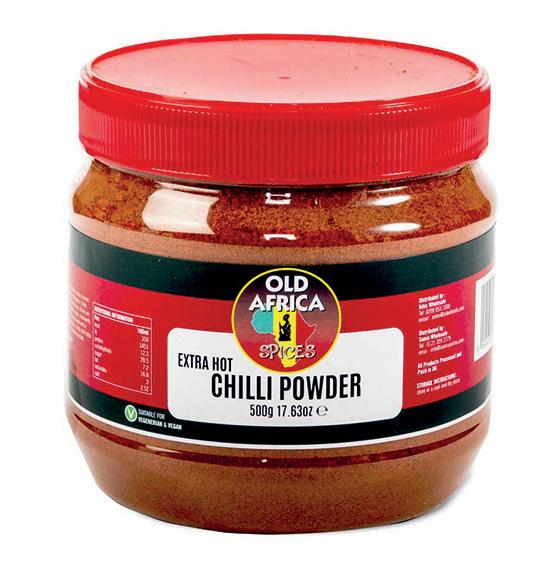
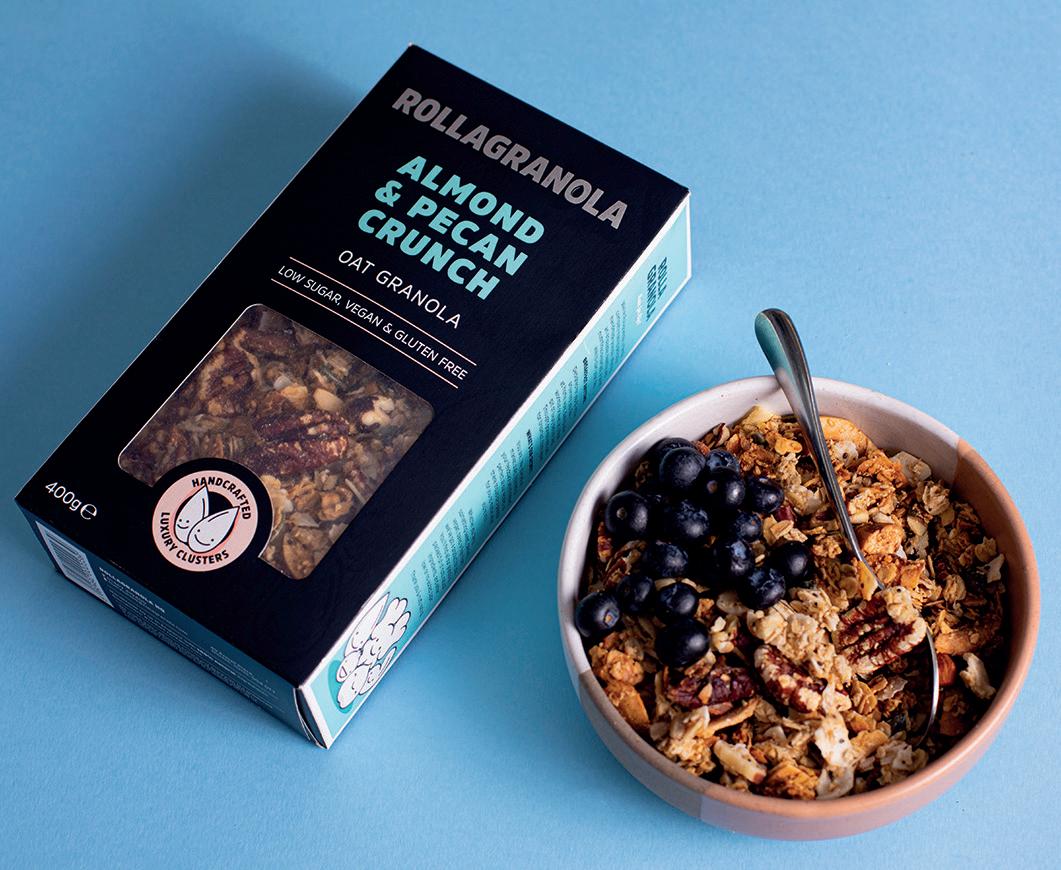
Our tester was very impressed with the Almond & Pecan Crunch granola. Naturally sweet, this variety is enhanced with vanilla, plant fibers pecans and almonds to create
A range of tastes
With the aim to deliver the authentic taste of African-Caribbean food to their customers, Olusegun Akande and his chef wife Oyetola Isola launched Samisonline.com in 2009. The couple also launched some tasty ready meals (oyettymeals.com) that they sell through Samis. Today Samisonline.com is the UK’s leading one-stop online superstore for the highest quality and authentic African-Caribbean food produce, with a range that includes fresh vegetables, dry foods (staples, flours, spices, seasonings), frozen vegetables, frozen meat, poultry, fishery products and drinks (alcoholic & non-alcoholic). www.samisonline.com www.oyettymeals.com
The team were very impressed with the wide and generous selection of products that Samisonline provided; from peanuts to seasonings and snacks. The Ades brand

a low-sugar, gluten-free start to the day. She said: “The granola was very nutty, and you could tell the quality as the almonds were still whole, which made it really filling. I combined it with soy milk and a drop of kefir yoghurt, and I found it make great start to a healthy day!”
plantain chips particularly stood out, as one tester notes: “In balancing salt and sweetness - and ensuring the final product has just the right amount of bite - these moreish nibbles are great as an accompaniment or snack.”
The team also discovered the joy of biscuity, nutmeg-laced Jaffro Chin Chins, and Tropical Suns Crunchy Coconut Peanuts, with their sweet yet brittle shell of coconut cream that gives an extra level of crunch.
Taste Test 28
Digital development
ARuVR®, a multi-award winning end-to-end, enterprise-grade Extended Reality (XR) training platform, announces that Coca-Cola Bepensa® has successfully deployed its platform to train maintenance and operation employees in critical work-flow routines ensuring they understand the hazards associated with tasks they perform in their daily activities.
With ARuVR®, Coca-Cola has a self-serving XR platform which provides intuitive software, requiring no AR or VR experience to create virtual immersive work learning modules and simulate many of the processes that require comprehensive training.

For Coca-Cola the ARuVR® platform has delivered quantifiable real outcomes, while giving employees a rewarding and engaging means to learn, upskill and improve their own performance in a 100 percent safe digital environment
“Ensuring that our staff are trained properly often involves creating potential scenarios to demonstrate hazards in the workplace. The XR platform completely removes training risk. ARuVR® has transformed the way we interact, train and develop our colleagues in a safe, scalable and above all simple to operate solution,” says Jorge Suarez, Corporate Safety Leader, Bepensa Coca-Cola.

Industry News foodchainmagazine.com 29
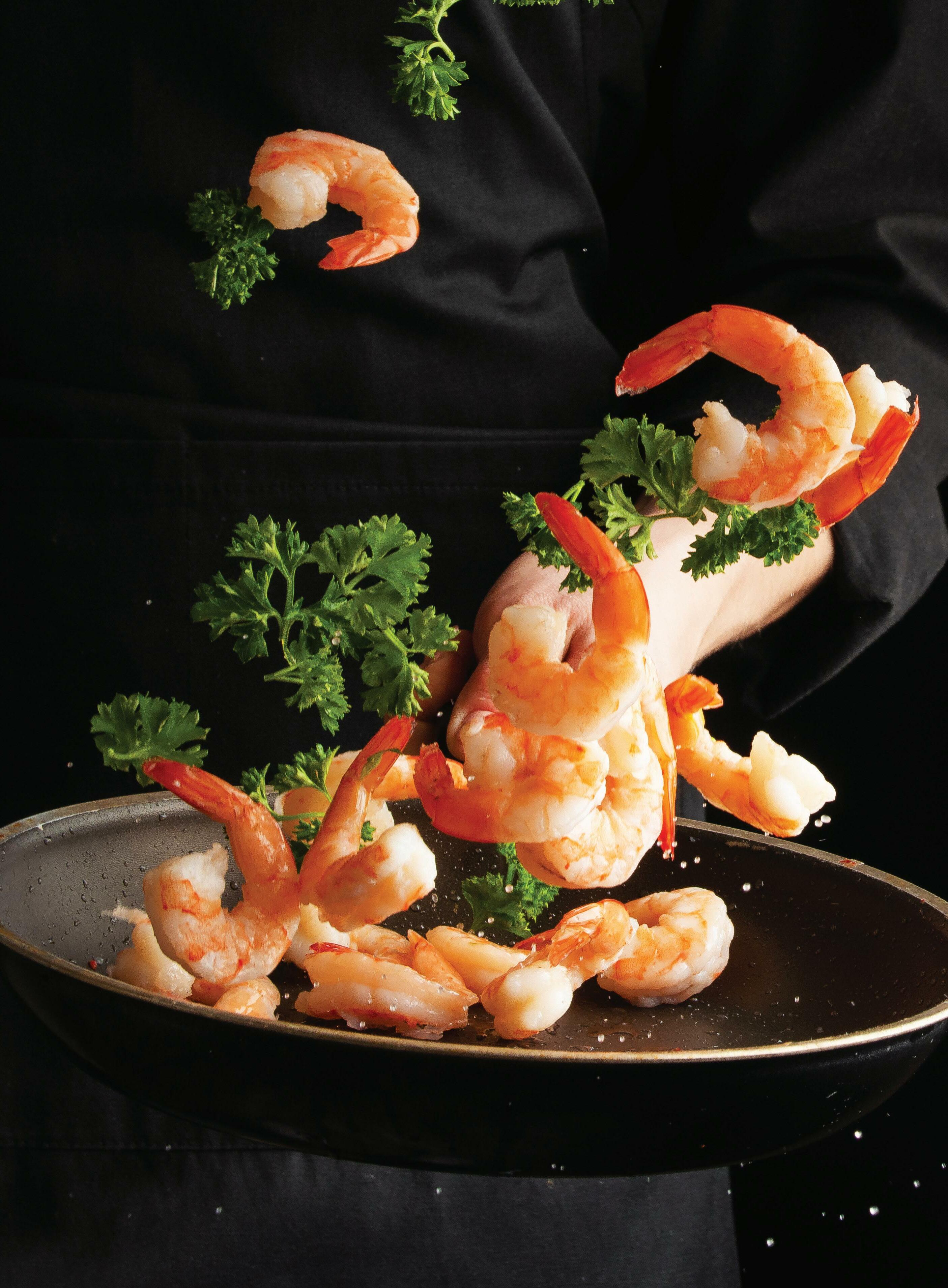

Loaf thy neighbor
Soreen, the champion of feel-good nutrition, is on a mission to feed the nation responsibly

32
ADanish Entrepreneur by the name of John Rahbek Sorensen founded Soreen in 1938. The company is famous for its malt loaf, which was as popular from its initial introduction as it is today. Despite being acquired by a number of different owners over the years: Imperial Bakeries, Warburtons, and, currently, the Samworth Brothers Group, the company’s soft and sticky mainstay has always been proudly baked in Manchester, UK. In considering the bustling trade and industrialization of the northwest in the 1930s, it’s no surprise that the delicious, energy-filled and affordable snack, grew to such huge popularity. Although it may have been Warburtons that was responsible for the company’s nationwide growth, it’s Samworth Brothers’ strategies that are bringing it into the future.

Soreen foodchainmagazine.com 33
The current bakery is nestled away in Trafford Park and operated by a team of 160 employees. The production process is traditionally organic, mirrored by many other bakeries up and down the country. The site operates round-the-clock, six days per week, producing around four million loaves of differing sizes and flavors. The dough is mixed, deposited into tins and baked in the oven, before being dispatched. This no-nonsense approach to healthy snack production is one of the company’s major unique selling points against its competitors – with short best-before dates, due to a lack of preservatives, unlike the altered alternatives that boast up to a year of apparent freshness.
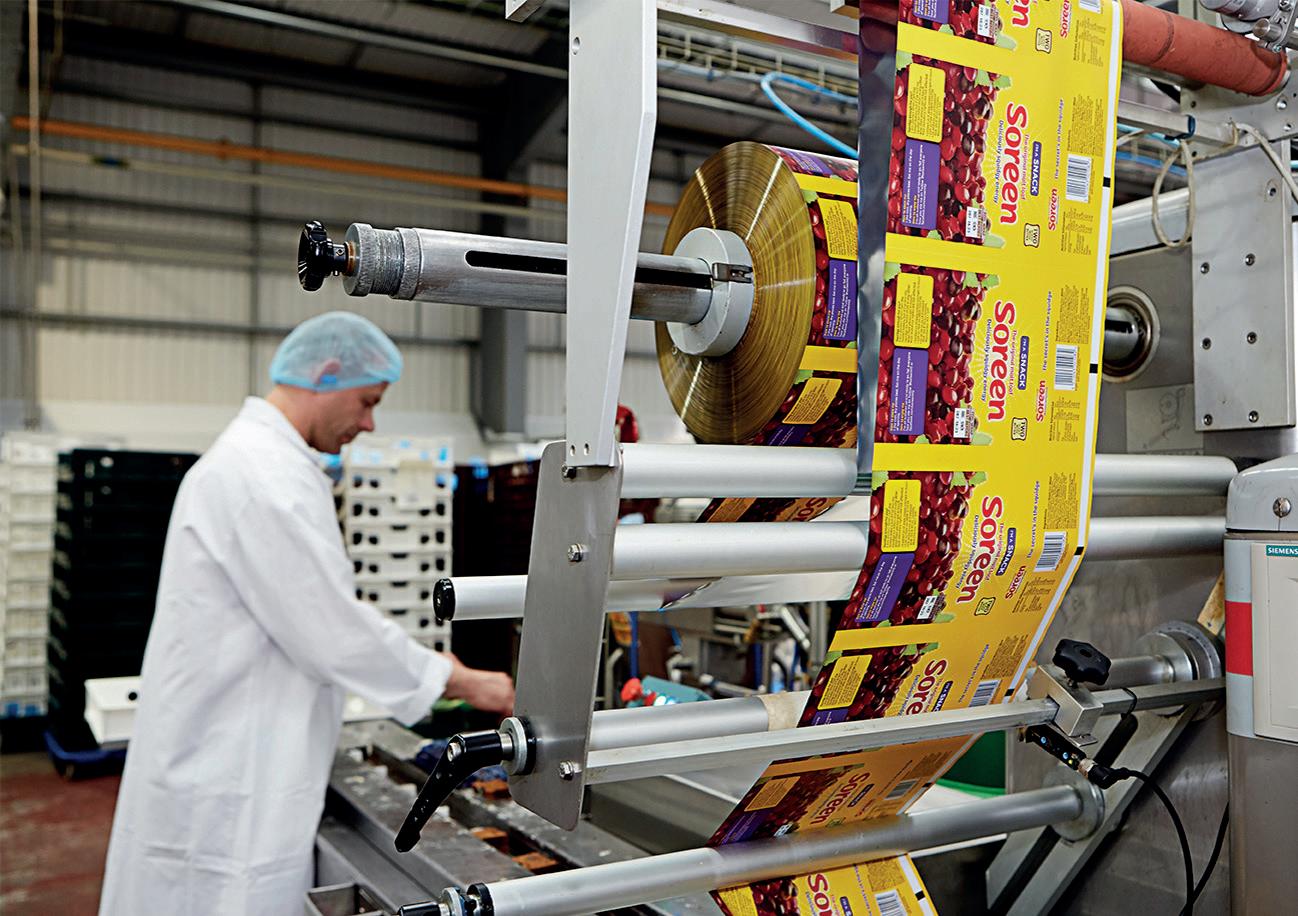
Lunchbox loaves
The original product itself is so good, that one of its largest innovations over the last eight decades has simply been related to its size. As Mark Simester, Managing Director, details further: “Up until 2012, the large malt loaves had made up the vast majority of the business, but that year, we released the lunchbox loaves product. While I was growing up, malt loaf was considered to be more of a treat food, a slice of which to be enjoyed with a tea or coffee mid-afternoon. When I joined as MD in 2016, people’s attitudes towards food had already begun to change. People are eating far fewer sugarfueled treat foods these days, and there’s been a nationwide boom in coffee shops, removing that traditional coffee and cake occasion from the retail sector. However, also by 2016, it was becoming increasingly obvious that the combination of our product, and in the new size we


34
had released a few years prior, was going to be enormous for Soreen. At this point, the bars only accounted for 15 percent of the business, fast-forward to today and they make up over half our business.

“Our bakery looks completely different as a result, it now features a highspeed wrapping machine and an automated system, for specifically processing the lunchbox loaves,” he continues. “We’ve seen spectacular growth, but there’s still a lot more we want to achieve. We want every household in the UK to know what a perfectly balanced and healthy snack malt loaf is. We’re finding that once people are aware, it instantly becomes a staple on their shopping list. The growth of the lunchbox loaves has honed our new strategy:
to position the entire business as a healthy snack company. We haven’t changed the product whatsoever; we’ve just shifted our focus onto the nutritional values that it already held – which everyone is amazed by. Because the lunchbox loaves are the perfect size for an on-thego snack, with only 90 calories, 0.8g of fat and 6.1g of sugar, they are HFSS compliant and perfect for anybody’s lunchbox, regardless of age.”



“ “


The business has been associated with Public Health England (PHE) for over five years now, partially due to the vested interest PHE has in consumers opting for malt loaf over chocolate or biscuits. Soreen takes great pride in adopting the full, colorized version of the traffic light system, unlike many of the

Congratulations Soreen on your continued growth! So proud to part of the journey www.firmenich.com
We
Soreen foodchainmagazine.com 35
very much see ourselves as champions of feelgood nutrition
“ “
huge multinational snack producers. Mark believes this to be the right thing to do and ultimately the responsibility of all producers, not consumers; to educate the nation on what are the healthier choices. “We very much see ourselves as champions of feel-good nutrition. We are keen for Soreen to be more than just a business, more than just sales and profit targets. We are exceptionally focused on our role in the community, both locally and nationwide, and have a platform to help improve the nation’s diet.

“The company operates on three beliefs,” he continues. “The first is affordability, as everyone should be
able to afford healthy, nutritious snacks. Take protein bars for example, retailing at £3 each, that kind of price range is too unrealistic for low-income families, which is why we’re super proud of our mainstream pricing. The next is that, as I mentioned before, snack businesses should make it as easy as possible for shoppers to make the correct choices and finally, the third, is that no child should go hungry. We may not be able to protect everyone, but we try to do as much as we can. Among our charitable relationships, we partner with a local Manchester foodbank called The Bread and Butter Thing. I believe they initially
36
approached us around four years ago, but we have really stepped up over the last 12 months. We donate both products and the time of our team. In fact, I believe there’s a Soreen team over there, helping out today.”


Business as a force for good


This support within the community extends to a large range of holiday hunger clubs, outof-term-time sports activities and general charities. In solidification of its commitment to helping others, Soreen is currently working towards becoming a B Corporation, which has a number of other implications too. Under this, the business is in the process of drawing up the public declaration of its sustainability initiatives, which have already been bolstered by the policies of the Samworth Brothers Group. The company is measuring its combined energy usage and researching a number of different reduction techniques, as well as decreasing its packed-plastic and overall impact on the environment through its carbon footprint.


Soreen’s attitude towards people is practiced internally as well. As Mark states: “People are the business, which is the basis of our culture. We are extremely fortunate to have lots of colleagues who have been with us for over ten years and along for the ride during this period of such monumental growth. We give our teams a
voice through regular surveys, committees and multi-functional work groups for hot topics, and generally spend a lot of time ensuring the culture is as positive as it can be. We have such a brilliant team who work so incredibly hard; I’d like to take the opportunity to congratulate them on the success that they have collectively achieved over the last decade, especially in terms of the increases in output and diversification they have seen us through. They are the ones who have done it, and I hope they continue to enjoy it going forwards. Looking that way, to the future, we want to be the most famous, healthy snack in the UK. We want every parent in the country to know about our nutritional values, so that we can have as big an impact as possible on the nation’s diet.” ■

www.soreen.com

Soreen foodchainmagazine.com 37

38
From a bakery to a frozen pizza giant, Nick Fallucca details the secrets to Palermo’s Pizza’s success



PRIDE PIZZA AND G
aspare Jack Fallucca and his wife emigrated to the United States from Italy during the 1950s. In 1964, they started Palermo’s in the form of a humble bakery on Milwaukee’s East Side that served traditional Sicilian food. By 1969, they were ready to expand the business into their first ever restaurant, which Gaspare built-out himself. For the last five decades since its inception, Palermo’s Pizza has grown into one of the largest frozen pizza producers in the US – a direct result of the inter-generationally inherited passion for good food, made from the best ingredients. According to his grandson, Nick Fallucca, President, Gaspare’s approach to conducting business was instilled within the bare bones of the company. He states: “The three fundamental foundations of the Palermo’s culture are simple: to provide really great customer service, cook delicious food, and treat employees well. They transpired from my grandfather’s early beginnings,
Palermo’s Pizza foodchainmagazine.com 39
and are largely responsible for the company’s great success today.”
“We didn’t start manufacturing frozen pizzas until 1979; a local grocery store was actually the catalyst,” he continues. “The owner had approached my grandfather with a frozen, French bread pizza and said: ‘Hey, Jack you’ve got to try this.’ He obviously protested, saying ‘are you kidding me? Why would I want to try a frozen pizza – I make my own!’ But this was their point, they wanted him to start making Palermo’s Pizzas available in a frozen format for grocery stores. So, in a true grassroots fashion, he built the first manufacturing facility out of an old house on the East Side whilst, with the pizzas, he was still making his own sausage by hand and chopping his own vegetables. There’s a theme to this in-house
innovation in the company history, but it wasn’t until the late 1980s that we really got our first big break.”


Pizza perfection
In 1989, Safeway collaborated with Palermo’s on the development of the first rising crust pizza to hit the market. Palermo’s produced this new pizza on behalf of Safeway’s label, which set the tone for a lot of the work that would carry the company through until the early nineties –other than a few personally branded products for smaller, local grocery stores. In 2003 Palermo’s launched Palermo’s Primo Thin through Costco, the first premium, ultra-thin pizza to hit the US market, and it was a huge success. From there Palermo’s moved into its new facility in 2006, where the company has remained ever since.


Palermo’s Pizza 40
Palermo Villa Inc. Company Headquarters and Manufacturing Facility, Milwaukee WI




“In terms of our theme of innovation, I’d be the first to admit that things don’t always go as we hope,” says Nick. “Back in 2007, we attempted to launch the Hearth Italia, a contemporary pizza for the 2020s – we incorporated our Italian stone-fired oven for the perfect base and covered it in pesto, cherry tomatoes, kalamata olives and feta. But the market back then just wasn’t ready; it failed completely. It wasn’t until 2013 that we really started to grow as a national brand, when we released Screamin’ Sicilian, which is now our most popular product. It coincided with the craft beer craze and we figured, why not make a craft pizza? We spent a lot of time sourcing the best ingredients we possibly could, frozen pizza or not, and used it as an opportunity to pay homage to my grandfather who had passed away the year prior.”
“Palermo’s is a brand that’s suitable for the whole family, but we also have our Connie’s brand. Purchased in 2017, Connie’s has a similar story: it was founded by an
Italian family in the 1960s in Chicago, so it’s all based around Chicago’s restaurant culture and its thin crust pizzas. It’s all natural and does extremely well in the Mid-West. There’s also Urban Pie, which fits in more with the premium, craft-style pizza market and focuses its attention on flavor exploration –we use it as our opportunity to experiment further with more unique ingredients.”
People and passion
“Recently, we launched our stuffed crust pizza and a breadstick-style pizza, under the Screamin’ Sicilian brand, and also our Surfer Boy Pizza in partnership with Netflix and Walmart.” He explains: “Surfer Boy Pizza has been one of the fastest growing products that we have ever released – in terms of velocity, it has done four times better than we had previously anticipated, with the largest retailer in the country. All in all, we put a lot of energy into the innovation of our products. We’re continuously searching for both the products that the market currently



42
wants, and the ones that it is not yet aware that it wants – it’s like baseball, if you don’t swing, you’re not going to hit the ball.”
Palermo’s employs two internal approaches to product development. First the research and development and marketing teams working together to create a list of 50 or so concepts, that are consumer tested. The list is narrowed down to the top ten, which are then tested further before being trialed. The other approach grows from an idea or suggestion made by an employee or owner that the company will develop and test. Externally, the company also works with customers to bring their ideas to life – of which they may request a full launch. Regardless of the outcome of any developed trials, Nick cites them all as providing invaluable knowledge to help with future development and growth.
“We work with data-supported decisions and trend analyses, not just our own opinions,” he explains. “We’re also happy to take a chance and fail fast, before picking ourselves up and moving onward – whether it’s an idea of ours that a retailer is running with or a suggestion from a customer that we’re willing to give a go. Our supply chain relationships mean a lot to us, something that was highlighted during the pandemic. We saw our demand increase enormously, given people were eating at home instead of at their favorite pizza restaurant. We actually grew during the pandemic, which we couldn’t have done without the strong partnerships that we have with our customers. We were able to support them in the same way our key suppliers were able to support us.”
At the heart of this constant innovation comes the obvious factors of finance and technology, but Nick says that Palermo’s people are what really sets it apart from the competition: “If you’ve got a frozen pizza manufacturing plant, there’s no tangible reason why you can’t do what we are

doing. If you’ve got money, you can buy the state-of-the-art technology with which we operate. What you don’t have is our people. We do a better job at creating our product, manufacturing it and getting it sold and distributed – because we have that special attention to detail. By ‘we,’ I’m saying it’s our people, it’s our drive, it’s our passion and innovation – It really just comes down to our team players at Palermo’s. Recently we were certified by Great Place to Work®, with 73 percent of our employees saying that Palermo’s is a great place to work. The average is 57 percent. That’s a testament for us. Great people make great pizza,” he concludes. A mentality that ties in beautifully with the ethics with which his grandfather started the business half a century ago. ■
www.palermospizza.com
Palermo’s Pizza foodchainmagazine.com 43
FROM
THE TREE

In proving that the apple doesn’t fall far from the tree, Brothers Drinks has continued over 300 years of family heritage 44
It’s incredibly rare for a family trade to make it past five or ten generations, let alone 14. This is where the ancestry behind Brothers Drinks Co. Ltd (Brothers) is currently at. Matthew, Jonathan, Francis and Daniel are the four Showering brothers who founded the company in 1992. In maintaining the family tradition of cider-making, which has been its mainstay of income since 1658, they tapped into the innovative spirit of their grandparents’ generation. This cohort was responsible for the creation of Britain’s best-known sparkling perry, Babycham. This early sparkling perry brand was launched in the 1950s and has recently been brought back into the Showering family, just last year. During the last 30 years, Brothers has grown far and wide from its base in

Brothers Drinks foodchainmagazine.com 45
Glastonbury Festival offered Brothers space for a bar

“
Shepton Mallet, UK, to being distributed to over 20 countries around the world. The self-proclaimed trailblazers of fruit cider adopt an innovative approach to product development, in striving to produce a number of flavors that think outside the bottle.
In 1995, Michael Eavis of Glastonbury Festival offered Brothers space for a bar near the Jazz World Stage, which has changed to the West Holts Stage in recent years. It was here that the company premiered the sale of its pear cider, a product which quickly became synonymous with the festival season and, for many festival-goers, the taste of the summer. The market exposure that this opportunity gave Brothers, and its products, was instrumental in building up its initial following, and ultimately
led to a far larger scale of production. After years of being asked by the public where they could purchase Brothers Cider when the festival was over, the company decided it was time to release its ciders to pubs and supermarkets, which finally happened in 2005. This relationship has remained prominent to this day; with the company’s Festival Apple variety being named as the official cider sponsor of the 50th edition of the festival earlier this year. Otherwise, its products can be found at over 100 other UK music festivals, as the brand has well and truly kept to its roots.
Flavor innovators
As one of the fastest growing cider brands in the market, it’s no surprise that Brothers has also been named the official Mulled Cider for London’s Hyde Park Winter Wonderland, for the second year running. This festive campaign runs in tandem with
46
near the Jazz World Stage.
. . “ “ “
an annual drive behind its famous Winter Warmer; a blend of its toffee apple cider, mixed with rum and winter spices, which is often sold through pop up bars around the UK at Christmas time. The Toffee Apple cider is from Brothers portfolio of curious flavors, which, the company states, set it apart from the other top five fruit cider brands. This range extends to a wide variety of other interesting combinations, including Cherry Bakewell, Rhubarb and Custard, Marshmallow and Strawberries and Cream ciders. These sit beside the more regular options from the Brothers offering, of Strawberry and Lime, Wild Fruit, Cloudy Lemon, Festival Apple and Red Apple ciders. In the constant search for new and exciting flavor combinations, Brothers also runs an entire campaign committed to different ways in which consumers can blend their go-to style with other drinks, and even food. Its website features a dedicated
blog, brimming with recipe ideas and inspiration for a multitude of secondary ways that its ciders can be enjoyed.
Improved facilities
Besides producing its own product lines, Brothers is an industry leading provider of both contract manufacturing and bottling services for other companies, such as WKD and Fever Tree. This side of the business sees an average annual output of 140 million bottles alone, before taking cans, kegs and PET products into consideration. It has recently undertaken a major refurbishment project, in which the business has invested in new, advanced product lines, reduced its energy usage and improved its facilities’ lighting. It’s already reporting savings of 65 percent, in terms of its energy consumption, and a decrease of 178 tons of CO2 emissions. Elsewhere, the company is utilizing its waste by turning it into CO2 to power the factory.

Brothers Drinks foodchainmagazine.com 47

In 2016, Brothers stepped in and purchased the Shepton Mallet Cider Mill from the Irish drinks giant C and C group PLC, in which it still resides today. The plant had originally been owned by the Showering family between the 1840s and the 1960s; it was even partially built by the brothers’ grandfather. Through buying it back, the company managed to save the jobs of 18 production staff and six managers. Despite already owning facilities within the plant, the purchase provided Brothers with a great deal of space to expand its operations. Matthew Showering, joint Managing Director, was quoted as saying: “You could make a quarter of the country’s cider at that place; it’s huge!”

Whether measured in growth, industry exposure, international reach or product development, the resounding bottom line is that Brothers is winning. With its national summer and Halloween campaigns this year reaching 45 million people across eight different cities, it’s fair to say that the brothers have continued on the path that their forefathers laid before them. The apple is still nestled directly below the tree. ■

www.brotherscider.co.uk

Brothers Drinks foodchainmagazine.com 49


50
Bread of life
Founded in 1914 by Joseph, Anthony and Fred, today, the third generation of the Nardelli family continues to oversee many of the business’ locations, and is still heavily involved in bringing the brand into the franchise arena. Rich in Italian heritage and old-world family recipes, Nardelli’s Grinder Shoppe (Nardelli’s) boasts regional brand recognition, thanks to its proprietary recipes, and superior customer satisfaction.
“Nardelli’s customers range from those popping out for a quick, wholesome lunch to families heading out to share sandwiches at dinnertime and enjoy the unique Italian deli experience we offer,” explains Marco Nardelli, CEO. “Half of our customers choose from our cold offering. We have some great imported meats, the type of traditional deli products on which the Italian grinder is based. We also have some terrific chicken and meatball products that form the basis of our hot offering. So, whether it’s a chicken or meatball parmesan, or a grilled chicken breast, these are the types of sandwiches that have made us famous, and are why people return time and time again. A Nardelli’s Italian grinder provides a unique flavor experience. So much so, we have been rated number one in the State of Connecticut, are recognized nationally, and are repeatedly named one of the ‘Best Sandwich Shops in the Nation’ by the Travel Channel.”

How Nardelli’s 100 years of history has helped create a family franchise of food heaven
Nardelli’s foodchainmagazine.com 51
As Anthony Nardelli, President, enthuses: “We have a signature marinade of vegetables with our proprietary, red-hot dressing. The unique flavor, fresh ingredients and daily-baked bread combine to create a delicious taste sensation that is hugely popular. Not only that, it takes two hands to handle one of our sandwiches. The grinder is stuffed with terrific ingredients, and really does require a big bite. At ten inches long and four or so inches wide, it almost looks like a football! Of course, whatever goes between the bread is of superior quality too.”
Popular trends
From the Italian-American slang for dockworker to the chewiness of the sandwich itself, while the origin of the term ‘grinder’ might be in question, there is no disputing its adaptability and perennial popularity. The traditional fillings remain firm favorites, but the brand is keen to evolve and develop in line with its customers’ tastes. As Diana Nardelli-Troiano, third sibling and COO, explains: “We recognize that part of the population may be vegetarian or looking for nonmeat options. As such, our menu caters to that, and even includes some plantbased meat substitutes, imported from Italy. We’ve incorporated these products into a sandwich that tastes like a traditional grinder to provide an authentic experience, but without the meat. We also offer gluten-free and vegan sandwiches, and this sector of our product offering has actually increased from three to five percent.”


Alongside the grinder, the Nardelli’s menu also includes a large range of hot and cold side dishes as well as the typical side complements to a

52
grinder, of coleslaw, potato and macaroni salads. All are crafted to an in-house recipe and can accompany delicious, freshly-made tuna fish or chicken salads. Additionally, customers can request add-ons. If their choice of grinder isn’t already hot or loaded enough, an assistant will always be happy to heap on fresh mozzarella, extra bacon bites or hot peppers to ensure a customized taste sensation. To top it off, customers can choose from a line of tasty sweet treats too.
Flexible approach
From daily and monthly specials to limited time offers, such as the St Patrick’s Day, corned-beef grinder and the Thanksgiving Gobbler, Nardelli’s likes to keep its customers informed. Social media, and notifications via the app, help to drive the message, and keep customers informed when the craving hits. The business has a loyal following and a large database of over 25,000 customers who react well and respond to product pushes.
Looking back over the past couple of years, Anthony, Diana and Marco concur that it is crucial to be flexible and to pivot in line with the changing retail landscape. Anthony explains: “While one challenge has been staffing issues, which was industry-wide, another has been the way we do business. In the face of the pandemic, we had to pivot to suit customer requirements, and online ordering became an integral part of our product offering. What once accounted for around four percent of our business, is now upwards of 20 percent. Ease of delivery is the new norm. Of course, while we’re able to return to business as usual, we’ve found that a certain segment of our customer base still prefers home delivery.”
As Lowell Farkas, Chief Business InHouse Consultant, adds: “We have had to adjust to ensure we handle this new way of working efficiently, and especially so at lunchtimes, as there is a relatively brief
window. We need to be able to manage the throughput quickly to meet demand.”
Growing footprint
With 15 locations currently, and at least three more opening in 2023, Nardelli’s does not show signs of slowing down any time soon. As Marco expounds: “Over the next three-to-five years, we hope to have 50 locations. Our goal is to launch an increasing number, year-on-year. We constantly try to improve our menu in line with customer feedback and demand. We listen to our customers, as is evident in our vegan and plant-based offering. This introduction to our product line was as a direct result of customer feedback. We’ve risen to demand, and it has become very successful. We keep a close eye on the data and respond accordingly. We also strive to be more tech savvy, both in our operations and with our customers. The world is better connected, and we need to keep up. We are currently revamping our app to incorporate easier ordering, and a robust loyalty program. We want to make sure it is as user-friendly as possible. Our loyalty program will launch in the first quarter of 2023 with the aim of gaining a greater customer base.”
Currently Connecticut-centric, 2023 will witness Nardelli’s branching out further afield to grow its footprint. As Anthony concludes: “We are going out of state next year to Massachusetts. We are also going into Westchester County in New York. A franchisee recently signed a development agreement, and will be opening another four locations in the next five years.”
From an award-winning grinder sandwich to a business model, honed to perfection over generations, the Nardelli’s proven concept boasts all the ingredients needed for success.
“If not for the great efforts of our family of franchisees, we wouldn’t have the opportunity to be featured in this magazine.” ■
www.nardellis.com
Nardelli’s foodchainmagazine.com 53
people’s people Our



Whether internally or externally, people are the Wen JAI Restaurant Group’s real day-to-day
54
▼ Jhonny Mercado
Jhonny Mercado, President and CEO, and his business partner Andres Garcia, founded JAI International Investment and acquired their first three Wendy’s restaurants in 2007. By 2014, this portfolio had grown to 63 establishments; as years passed, they reached a total of over 225 locations by 2019. Come 2021, Jhonny and Andres sold some of the restaurants and established Wen JAI Restaurant Group (Wen JAI), launching with a total of 74 units – to which an extra ten have recently been added.
Jhonny’s achievements extend further than the fast-food industry. He uses the immense platform that he and Andres have built in a multitude of ways to help the lives of those who are less fortunate. He sits on the board of directors of the Dave Thomas Foundation for Adoption, a charity that has been partnered with Wendy’s for 30 years and supports children living in foster care. Wendy’s runs two campaigns for the charity every year, however since 2020, Wen JAI has incorporated a third fundraiser

Wen JAI foodchainmagazine.com 55
within its franchises, which has thus far raised an additional $200,000 annually.

“The foundation has found over 12,000 homes for children during the last 20 years, but I am involved in a number of other charitable causes too,” Jhonny details further. “In 2018, we raised $343,000 for the Lymphoma society over a period of around ten weeks – it was great! We also support a number of smaller causes within the communities, such as high schools and sports teams, and I am a board member at the Baptist Hospital in south Florida too.”
Giving back
This charitable nature is also applied internally, when an employee is in need Wen JAI will step in and help wherever it can, as Jhonny continues: “One of my managers came to me with a serious problem, she was struggling to afford a kidney transplant. So, I posed it to my head-office team to come up with a solution. We decided to run a program in which we bought 10,000 bracelets to sell for $1 each, to raise money for her, and we managed to sell over 12,000! It felt amazing to be able to give her a cheque for $13,000 – she was super happy as were her family, it
all goes back to supporting your team in any way that you can, it’s non-negotiable. This is very important to us, it’s part of our culture to give back to the community and our people.”
People first
Wen JAI operates with a people-first culture that focuses on taking care of employees, so that they can take care of customers. Staff retention and motivation are cornerstones to the success of the company, so it hosts a range of employee appreciation weeks, competitions and promotions. In creating an environment where everybody feels happy and comfortable, it also strives to get them the recognition they deserve. Managers are encouraged to practice open communication with their teams and to organize celebrations for birthdays, employee anniversaries or graduations. “People come first, and we are our people’s people,” Jhonny elaborates. “This is what I want to be at the forefront of my employees’ minds when they step
56
into my office. Over the last few months, we have been discussing how to improve the bonus program for our field staff. We care about their feedback to set our goals and incentives for the operators. But I leave it to those who work closer to the teams it will impact, the ones who have a greater idea of targets that are more realistic and likely to motivate everyone. It’s not created for me or my executives, so it shouldn’t be created by us.
. . Retention, retention, retention is key “ “ “ “
implementation of the new DSG2 double-sided grills will allow the restaurant’s short order chefs to cook juicier, tastier patties in less time.
“This is our focus, we seek out people with commitment who enjoy working for us and are happy to come to work. Retention, retention, retention is key. I never want to lose anyone whether it’s at office level or in the field, so we are always striving for more commitment than complaints in our staff. Even if we fail and somebody decides to leave, we interview them on the way out, so we can work on ourselves for the future. This ties in with the instore renovations that we are conducting. We are obviously looking to improve facilities for our customers, but we also view this as a benefit for our ‘internal customers’ – our employees. New equipment, air conditioning units, furniture and landscaping all give people a sense of pride in their surroundings, and a work environment in which they can thrive.”

As part of the Wendy’s Image Activation initiative, Wen JAI has been working through renovating and investing in its locations – to date, it’s almost 90 percent complete. The main goals have been to update the restrooms and dining areas, to make the spaces more comfortable whilst complying with ADA guidelines, and the installation of new equipment. The
The traditional Wendy’s menu consisting of Dave’s burger, baked potatoes and hot and crispy fries can now be paired with a larger number of beverages, thanks to the new Coca-Cola Freestyle machines. In terms of diversifying further, rather than focusing on current branches, Wen Jai’s goal is to hit 150 locations within the next three years, and to be on track for 300 in the next five.

Award winning
During Jhonny’s time with Wendy’s, his many enterprises have received a number of accolades: in 2013, JAI International Investment was presented with the
.
Wen JAI foodchainmagazine.com 57
Exceptional Employer Award by the Florida Governor. In 2021, Wen JAI, was recognized as the Best Operator of the Year by Wendy’s Corporate and given the Culture at Work award by Always Designing for People (ADP). A more recent
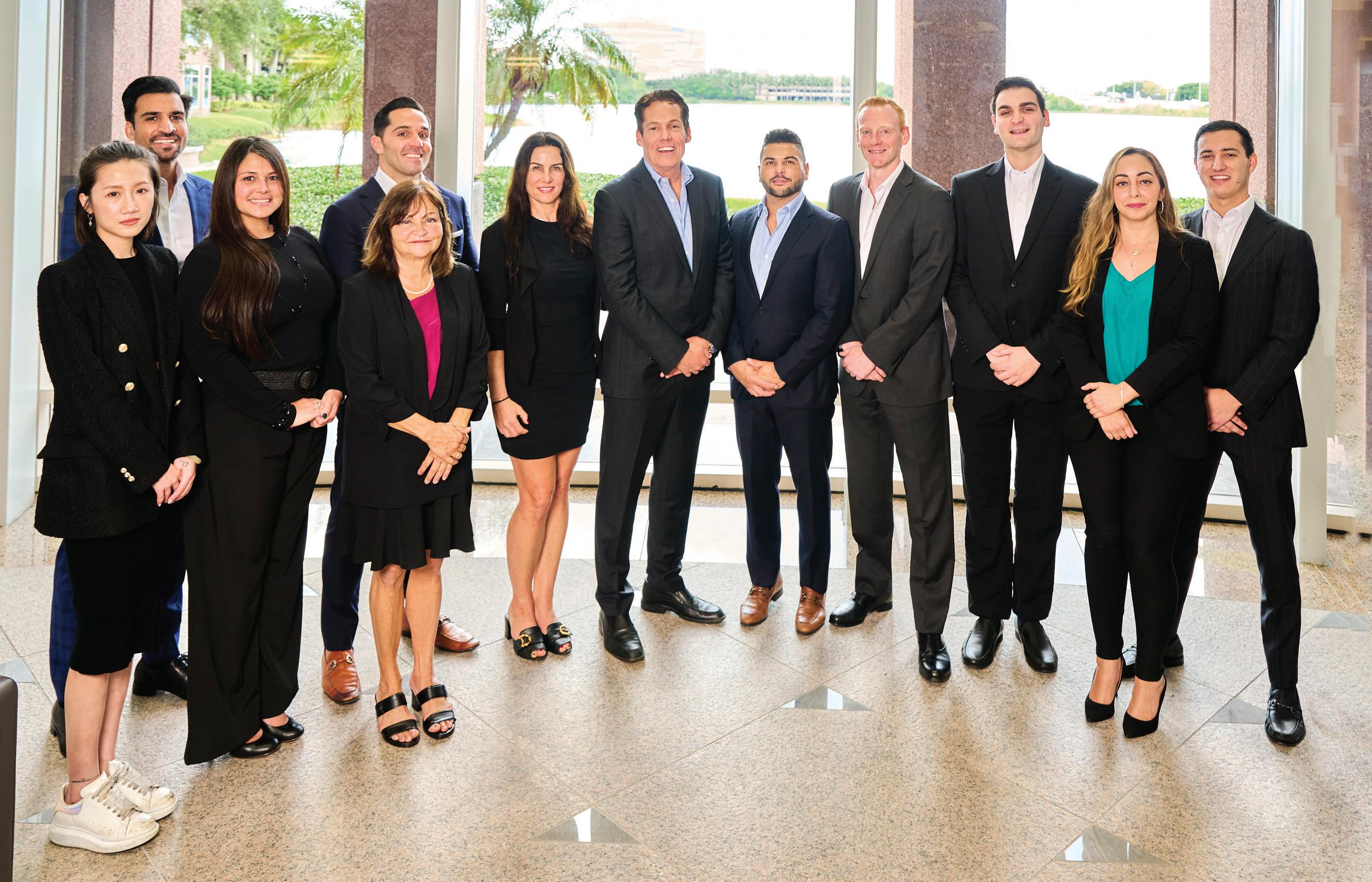
addition to the trophy cabinet came in the form of the Wendy’s Monument award in August 2022.


Good things happen to good people; and it would appear that Wen JAI’s charitable acts and considerations towards its staff, running in correlation with the group’s success and growth, are standing as testament to this. It is truly reassuring to see a franchisee of such a size obtaining so many achievements, by putting people, not just its own team members, but all people, first. Jhonny’s vision is a simple one, as he concludes: “I wish to build a strong company that is a legacy not simply for my family, but also for our employees and the communities where we serve.” ■
www.wenjairg.com

Wen JAI 58






foodchainmagazine.com 59
Run your chain your way
HungerRush 360 is the cloud-based POS system that helps you manage every aspect of your chain in one platform to accelerate growth and enable new levels of efficiency.

Get even smarter about digital ordering.

Harness the predictive power of AI to drive more orders and reach people the way they’re already communicating: by text or voice. Built-in AI means it practically runs itself.
Learn more at hungerrush.com



































 Marc Carena, Regional President for Europe, Central Eurasia, Belarus and Turkey
Marc Carena, Regional President for Europe, Central Eurasia, Belarus and Turkey













 By Larry Clarke
By Larry Clarke

 By Alessio Tagliaferri
By Alessio Tagliaferri









































































